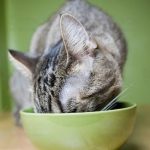Are you a cat owner who loves nothing more than cuddling with your furry friend, but finds yourself constantly covered in cat hair? As much as we adore our feline companions’ soft and fluffy fur, shedding can be a frustrating and messy problem.
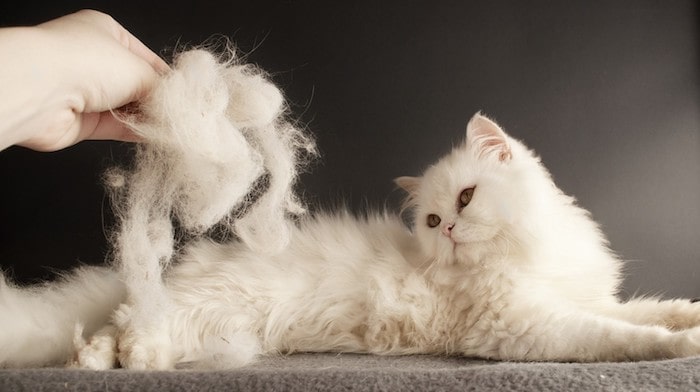
But fear not! In this article, we’ll uncover the mystery behind why cats shed so much and explore the various factors that can affect their shedding patterns.
We’ll give you some practical tips on how to manage excessive shedding and keep your cat’s coat healthy and shiny. So grab a cup of tea, curl up with your cat (and a lint roller!), and let’s delve into the fascinating world of cat shedding.
Factors Affecting Shedding in Cats
Cats are known for shedding their fur, and while this process is normal, there are several factors that can affect the amount and frequency of shedding. Understanding these factors can help you manage your cat’s shedding and keep their coat healthy and shiny. Here are some of the most important factors that can affect shedding in cats:
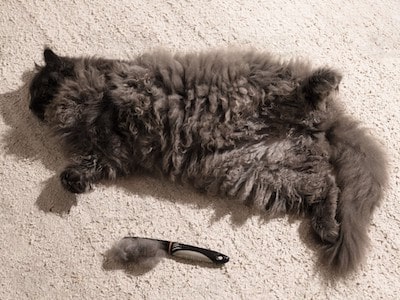
- Genetics: Just like humans, cats inherit traits from their parents, including their coat type and shedding habits. Some cat breeds, such as the Siamese or Sphynx, shed very little, while others, like the Maine Coon or Persian, shed more frequently.
- Breed: While genetics play a role in shedding, breed can also affect how much and how often a cat sheds. Long-haired cats tend to shed more than short-haired cats, and cats with dense coats, such as the Norwegian Forest Cat, may shed more than those with thinner coats.
- Age: As cats age, their coat and skin become less elastic, making it harder for them to shed their fur naturally. This can lead to excess shedding, matting, and other coat issues.
- Health: A cat’s overall health can affect their shedding patterns. Skin conditions, allergies, and hormonal imbalances can all lead to excessive shedding. If you notice your cat shedding more than usual, it’s important to take them to the vet to rule out any underlying health issues.
- Climate: Cats who live in warmer climates tend to shed more than those who live in cooler areas. This is because shedding helps cats regulate their body temperature, and in warmer climates, they need to shed more fur to stay cool.
Reasons for Excessive Shedding in Cats
There are several reasons why cats may shed more than usual, and understanding these reasons is key to managing your cat’s shedding and keeping their coat healthy. Here are seven common reasons for excessive shedding in cats:
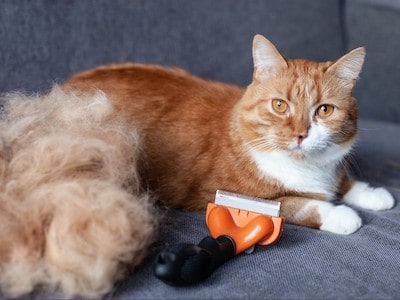
- Seasonal shedding: Many cats shed more during the spring and fall, as they prepare for the changing seasons. During this time, cats may shed large amounts of fur as they replace their winter coat with a lighter summer coat or vice versa. This shedding is usually temporary and will resolve on its own.[1]
- Stress: Cats are sensitive creatures, and stress can cause them to shed more than usual. Common sources of stress for cats include changes in routine, moving to a new home, or the addition of a new pet to the household. If your cat is shedding excessively and you suspect stress may be the cause, try to identify and address the source of the stress to help your cat feel more relaxed.
- Diet: A poor diet can lead to a dull, dry coat and excessive shedding. If your cat is not getting the proper nutrients, their coat may become dry and brittle, leading to more shedding. Make sure your cat is eating a balanced diet that provides all the necessary vitamins and minerals to keep their coat healthy.
- Allergies: Cats can develop allergies to a variety of things, including food, environmental allergens, and flea bites. Allergic reactions can cause itching and irritation, which can lead to excessive shedding as your cat tries to scratch and groom themselves. If you suspect your cat may have allergies, talk to your vet about allergy testing and treatment options.
- Health conditions: Certain health conditions can cause cats to shed more than usual. Skin infections, hormonal imbalances, and thyroid problems are just a few examples of conditions that can affect a cat’s coat and cause excessive shedding. If you notice your cat shedding more than usual, it’s important to take them to the vet for a check-up to rule out any underlying health issues.
- Parasites: Fleas, ticks, and other parasites can irritate a cat’s skin and cause them to shed more than usual. If you suspect your cat has parasites, talk to your vet about the best treatment options.
- Age: As cats age, their coat may become less elastic, making it harder for them to shed their fur naturally. This can lead to matting, tangles, and excess shedding. Regular grooming and vet check-ups can help keep your aging cat’s coat healthy and comfortable.
How to Manage Excessive Shedding in Cats
Excessive shedding in cats can be frustrating for both cat owners and their feline companions. Fortunately, there are several steps you can take to manage excessive shedding and keep your cat’s coat healthy and shiny. Here are some practical tips for managing excessive shedding in cats:
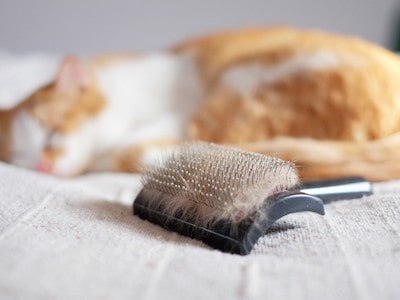
- Regular grooming: To avoid finding fur on your furniture and clothing, it is beneficial to brush and groom your cat regularly. The frequency of grooming sessions depends on the type and length of their coat, but most cats will benefit from being brushed daily or weekly.
- Bathing: Although cats are typically clean creatures and may not require frequent baths, bathing your cat every few months can assist in eliminating excess fur and reducing shedding. To prevent skin irritation, make sure to use a shampoo that is safe for cats and rinse your cat completely.
- Proper diet: It is important to provide your cat with a balanced diet for a healthy coat. To ensure that your cat maintains a healthy coat, it is necessary to provide all the essential nutrients such as protein, vitamins A and E, and essential fatty acids.
- Regular vet check-ups: The identification and resolution of any health problems that are causing excessive shedding can be aided by veterinary check-ups. Additionally, your veterinarian may suggest supplements or other therapies to enhance the health of your cat’s fur.[2]
- Environmental control: To manage shedding, it’s important to maintain a clean home and minimize allergens. One way to do this is by frequently dusting and vacuuming to eliminate loose fur and dander. In addition, utilizing air purifiers can effectively decrease airborne allergens.
- Flea prevention: Excessive shedding can be caused by fleas, which result in itchiness and irritation. To prevent fleas and decrease shedding, regular use of flea collars or topical treatments is recommended for keeping your cat free from these parasites.
- Stress reduction: By providing plenty of playtime and environmental enrichment, you can reduce stressors in your cat’s environment, which in turn helps to minimize excessive shedding that may be caused by stress.
FAQs
How much shedding is normal for a cat?
The amount of shedding can vary depending on the cat’s breed, coat type, and age. However, if you notice a sudden increase in shedding or bald patches, it’s important to consult with your vet to rule out any underlying health issues.
Should I shave my cat to reduce shedding?
Rather than good, shaving a cat’s fur can result in more harm. The fur of a cat assists in regulating their body temperature and safeguarding their skin from the sun and other environmental factors. Shaving may also lead to skin irritation, and the hair might not grow back suitably. Instead, emphasize regular grooming and alternative techniques to handle shedding.
Is it normal for cats to shed more in certain seasons?
Yes, cats can shed more in the spring and fall seasons as they prepare for changes in temperature. Some cats may also shed more during the summer months to help regulate their body temperature.
Can supplements help reduce shedding in cats?
Yes, certain supplements, such as omega-3 fatty acids, can help improve a cat’s coat health and reduce shedding. However, it’s important to consult with your vet before giving your cat any supplements.
Conclusion
To sum up, shedding is a typical occurrence in all cats. Nevertheless, extreme shedding may indicate an underlying health problem or environmental influence that requires attention.
Cats can have reduced shedding by maintaining a healthy diet, regular grooming and living environment. It’s crucial to seek advice from your veterinarian if you have any worries about your cat’s shedding habits.
With appropriate care and attention, you can ensure that your cat’s fur remains healthy while minimizing excessive shedding.
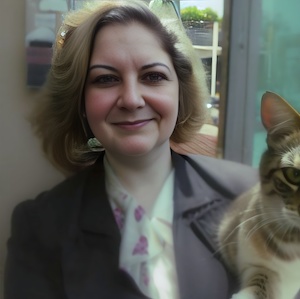
Charlene Pare is the founder of Cat Likes Best. She manages and strategizes the content published on this website. When she isn’t working, she enjoys exploring the city around with her Ameican Shorthair kitty–Moli. Being a technocrat and an avid cat lover, she also writes on pet tech products and some of the featured articles.




